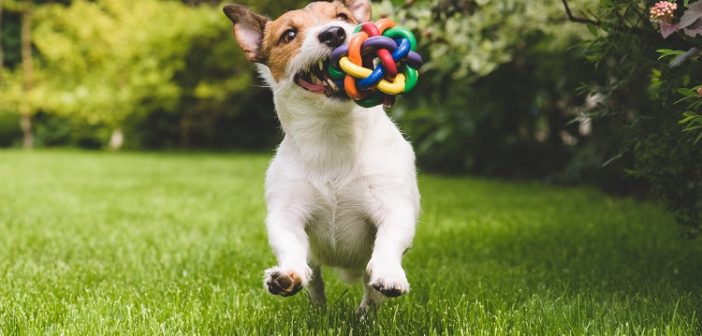Puppies need to be housebroken. Either you potty train yours early, or you pay the consequences. You should have your dog trained well within the first eight months because older dogs are even harder to train;
Like humans, puppies learn quickly and best through positive reinforcement. Curiously, they also have a sense of privacy, and trainers must respect that, too. According to the Humane Society, “House-training your dog or puppy requires patience, commitment and lots of consistency.”
Dogs must void their bladders and bowels to remain healthy, but you can manage the appropriate place and time to do so. This takes consistency on your part in how and when you train. Training is best for both the animal and the owner. Many academies such as the Delaware K9 Academy have multiple services to choose from.
Here are 10 easy steps to potty train your dog:
- Analyze your problem. If your dog will be alone all day or part of the day, you both have different problems. Expecting your dog to contain its natural processes for eight hours or more is asking a lot. So, if you or someone in the family is not there to care for dog’s needs, you want to modify your training.
- Remove existing odors. Dogs instinctively mark what they consider their “territory.” They will mark places with urine to eliminate existing odors and spray new places to “warn” other dogs away. And, you must remember that there are odors that do not make visible stains.
So, you should eliminate odors left by former pets. Cleaning carpet and other fabrics will prevent your pet from being distracted. You should not use ammonia or cleaners including ammonia because ammonia remains a urine odor. Your pet market has many products for cleaning and double checking your home.
- Buy some supplies. Training your dog takes much more involvement than responding when the puppy breaks the “rules.” They know better than to live near or in their own waste, but without opposable thumbs, they are limited in what they can do. There are many ways to potty train a puppy, one of them is using dog doorbells which they can use to signal if they want to go outside to poop. TreehousePuppies has reviewed the best of these doorbells so check out their site.
You must appreciate their position and make a plan to make things easier and smarter for them. Using a good sturdy crate to house the puppy, you can recreate its instinctive cave warren. You should position the crate as the dog’s comfort zone in a quiet place.
You’ll need a collar and leash to take the dog for walks. It will take some training before you leave the dog on its own, so the leash and collar should be used consistently enough that the dog recognizes and welcomes the collar and leash as a signal it’s time to go outside.
- Make a plan. You and the dog need a consistent and formal schedule. Like us, dogs will feel the urge to go not long after drinking or eating. That requires you to master the situation with a plan you can monitor and record.
You’ll want to feed and water the dog in the same spot with the same bowls all the time. You should feed the pup at the same times and give them 20 minutes to eat. Whether they finish or not, you should remove the food bowl after that 20 minutes. And, you do not feed the dog again until another scheduled time that fits both your day and the dog’s schedule. Controlling the pet’s intake should control its output.
- Study nesting. The dog’s idea of inside and outside differs from yours. For the dog, “outside” means anywhere outside the circle it makes when turning around. You want to train from the dog crate out to one room at a time.
As you expand the dog’s sense of inside, you can differentiate between inside and out. You might reserve the use a bell or bells to signal “go outside” until the dog responds with some excitement.
- Stick to the plan. The dog needs positive rewards, but they come in many forms. Consistency is one form. Crate time, play time, rest time, food and water time, and roaming time are other rewards that need scheduling and consistency.
So, you might observe the dog’s natural behaviors and build your schedule around them. You would begin by walking the dog after waking up. Then, you would schedule a consistent series of behaviors like times for roaming, feeding, walking, crate, and repeat. The consistent both trains and comforts the dog.
- Spot a place. You can add to the dog’s comfort level by following a consistent walking route. If it’s your backyard, you can designate a go-to sport by walking to the spot with the leashed pup, and waiting for the dog to finish its job.
If your community has a dog park or open area, you can direct the dog to that area. If the dog prefers to go along the way, you must restrain the dog or pick up after it. With repetition, you can train the dog to respond to your verbal cue like “park,” “potty,” or any cue specific to that task.
But, if you live in an apartment tower with no local green space, you will need a doggie litter box for the dog’s indoor use. Washable dog belly bands, like those available when you visit PetParentsBrand.com for more help, will solve part of your problem.
- Learn the signals. Dogs instinctively follow certain rituals. They will sniff and walk stiffly. They will circle a spot. One way or another, the dog’s behavior will change. It’s a good idea to limit the puppy’s roaming territory to the kitchen or tiled area where you can clean messes quickly and easily. Dogs do not willfully disobey, but they need direction on the place, time, and cues.
- Reward good behavior. You have no cause to punish the dog. It will only confuse the dog and reinforce unwanted behavior. You must reward the dog immediately for the appropriate behavior with a verbal cue, vigorous patting, and ruffling its pelt. Whatever you do, you must do consistently.
You can reward with a doggy treat or favorite squeeze toy, but you must use the same rewarding behavior and differentiate it from other rewards.
- Improve your behavior. Dogs are amazingly observant. They are in a flight and fear situation in the strange environment your home and family present. Your behavior may stress or confuse the dog. Your impatience or anger will not help. And, everyone in the house should know all the same signals and behaviors.
Consistency counts!
The American Kennel Club points out, “An 8-week-old puppy is very different developmentally than a 5-month-old puppy.” But, you must let the dog train you. You will find the process easier if you are willing, positive, scheduled, and consistent.




